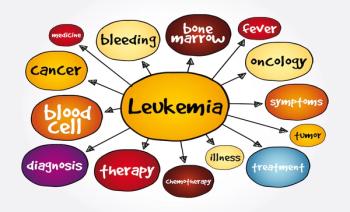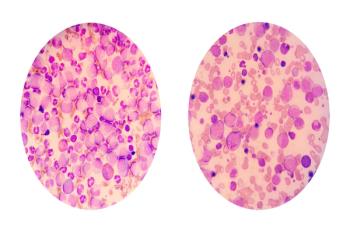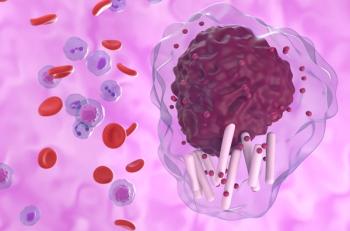
A panel of experts discuss optimizing therapy sequencing in CLL.

A panel of experts discuss optimizing therapy sequencing in CLL.

A conversation on how to empower patients and the considerations for BTK inhibitor adherence.

Researchers of a new study explore what areas of chronic lymphocytic leukemia (CLL) treatment and care are important to patients and identify key areas for improvement.

In this interview from our coverage of the European Hematology Association 2024 Congress, we spoke with Brian Koffman, MDCM, DCFP, FCFP, DABFP, MSEd, executive vice president and chief medical officer of the CLL Society and himself a survivor of chronic lymphocytic leukemia (CLL), to discuss treatment advancements and the importance of addressing both unmet needs and patient treatment preferences.

Pirtobrutinib led to improved outcomes compared with venetoclax in patients with relapsed chronic lymphocytic leukemia (CLL) following covalent Bruton tyrosine kinase inhibitor therapy.

Specialists discuss factors influencing the choices of second-generation BTK monotherapy.

Experts evaluate the value of BTK inhibitors in CLL treatment.

A post-hoc analysis showed that zanubrutinib resulted in fewer adverse events compared with ibrutinib.

It is rare for patients with chronic lymphocytic leukemia (CLL) to present with ocular involvement, but a mutational test could help clinicians identify patients more quickly.

Chronic lymphocytic leukemia (CLL) and small lymphocytic lymphoma (SLL) are rare in Japan, but a new report affirms the effectiveness of venetoclax (Venclexta) and rituximab (Rituxan) (VenR) in this population.

Only about 1% of patients with chronic lymphocytic leukemia (CLL) developed an invasive fungal infection while on a Bruton’s tyrosine kinase (BTK) inhibitor, investigators found.

A panel of experts provide an overview of BTK inhibitors for the treatment of patients with chronic lymphocytic leukemia.

Experts on the treatment of chronic lymphocytic leukemia discuss recent trends and innovations in the therapeutic landscape.

In the realm of lymphoma and chronic lymphocytic leukemia (CLL), and of the treatments that address them, a global survey of nearly 7000 patients proves there’s a long way to go to eliminate cancer-related fatigue from their lives.

This study provides a comprehensive review of both established and emerging prognostic markers in chronic lymphocytic leukemia (CLL), and their role in predicting disease, treatment response, and overall survival.

Researchers have found that specific genetic markers may increase the risk of cardiovascular adverse effects in patients using Bruton’s tyrosine kinase (BTK) inhibitors.

A real-world report showed the safety and efficacy of zanubrutinib after a community oncology practice replaced ibrutinib with the newer Bruton tyrosine kinase inhibitor on its formulary.

An abstract presented at the 2024 American Society of Clinical Oncology annual meeting showed that patients treated with zanubrutinib or acalabrutinib had more favorable safety and efficacy outcomes.

The authors said their analysis should help clinicians better monitor patients for potential adverse events.

The new data shed light on long-term outcomes for patients receiving duvelisib, although the investigators said the treatment landscape has also shifted significantly since the original trial.

BET inhibition in chronic lymphocytic leukemia (CLL) significantly reduces leukemic cell burden and restores T-cell function by modulating the immune microenvironment and reversing T-cell exhaustion.

A new report finds secondary immunodeficiency disease (SID) also increases the risk of mortality in patients with B-cell malignancies.

A 77-year-old man had no risk factors for hepatocellular carcinoma (HCC), but he was nonetheless found to have it. Along the way, he was also diagnosed with previously undetected chronic lymphocytic leukemia/small lymphocytic lymphoma (CLL/SLL).

Matching-adjusted indirect comparison methodology was utilized to compare ibrutinib arms across the ALPINE and ELEVATE-RR trials.

Due to the rarity of primary breast lymphoma, individualized treatment plans that consider overall health, symptoms, and patient preferences should be curated.

259 Prospect Plains Rd, Bldg H
Cranbury, NJ 08512
© 2025 MJH Life Sciences®
All rights reserved.
